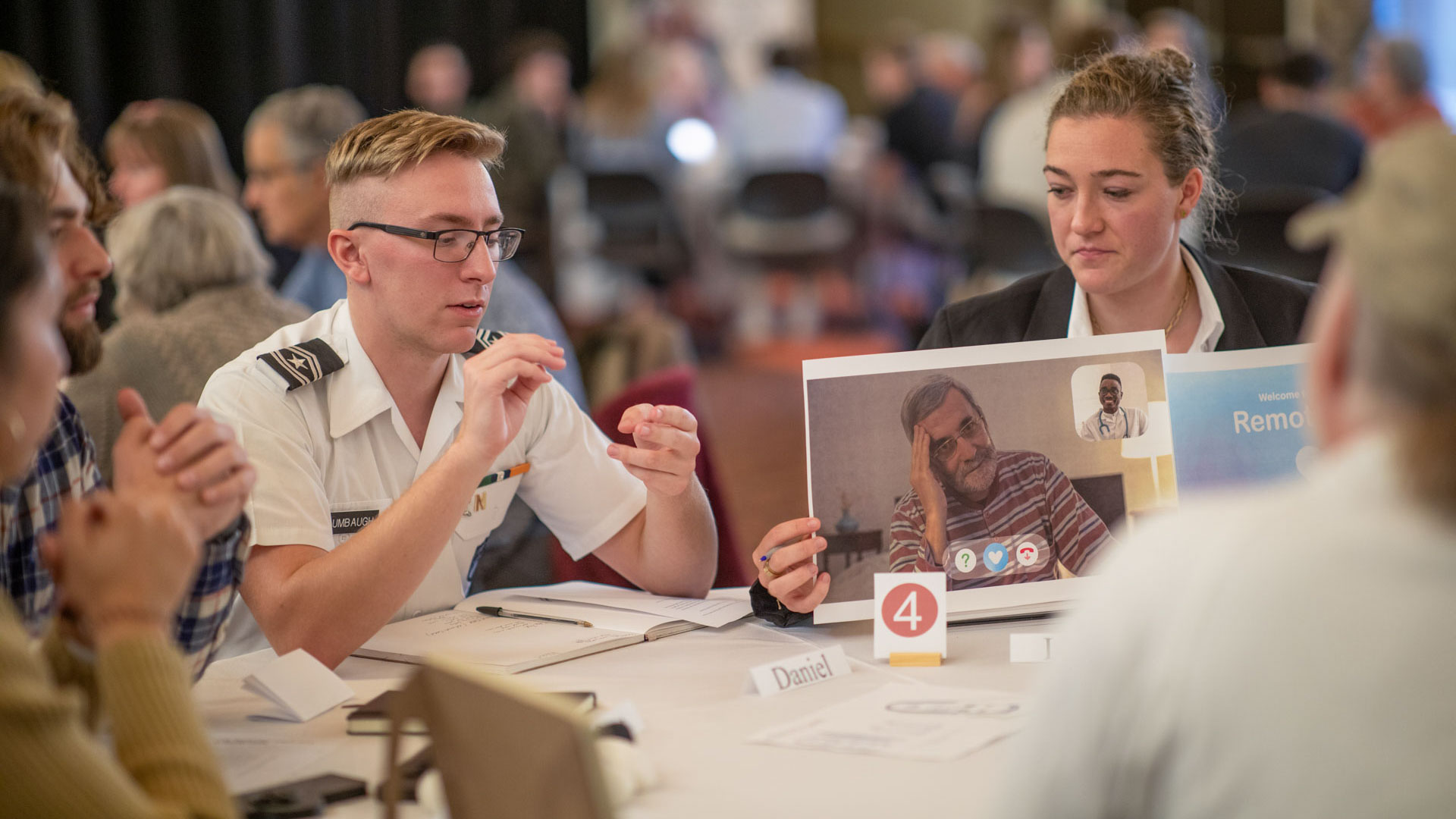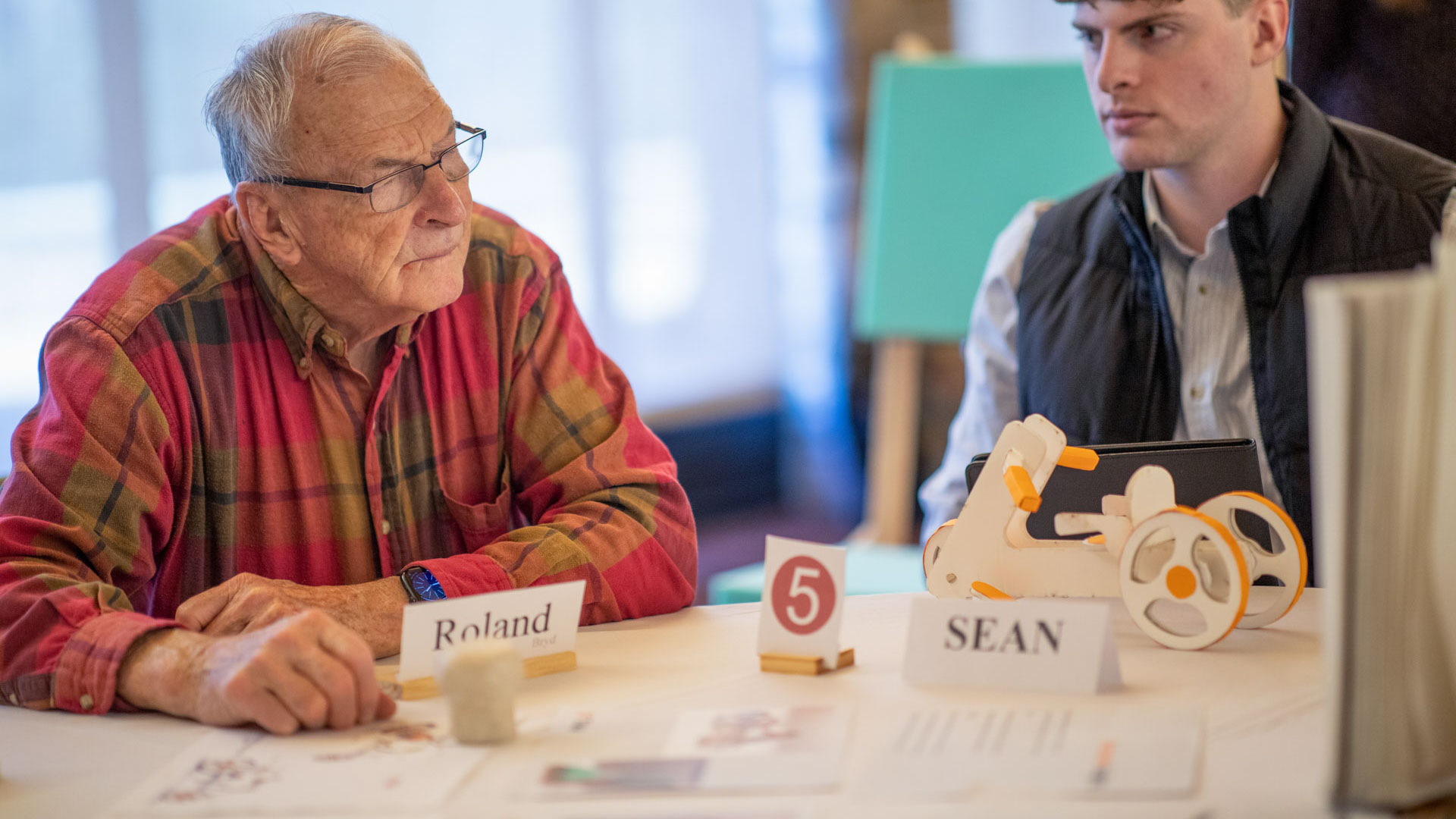

What happens when bright students tackle the real challenges of aging? For sixteen years, SFCS has partnered with Virginia Tech's Industrial Design program to create solutions that enhance the daily lives of older adults while providing students with invaluable real-world experience collaborating with their product’s end users.
Since 2009, this initiative has connected more than 350 industrial design students with residents at Warm Hearth Village in Blacksburg, Virginia. The program enables participants to develop practical solutions based on genuine needs rather than assumptions about their target market.
"Our sponsorship of this studio has been a way for our firm to invest in future generations and make a difference in the lives of older adults," explained Curtis Jennings, III, a principal at SFCS.
This three-way collaboration brings together the design expertise of SFCS mentors, the fresh perspective of Virginia Tech students, and the crucial feedback from Warm Hearth Village residents who participate in testing and evaluation.
What distinguishes this program is its user-centered approach. Students immerse themselves in understanding the aging experience through direct interaction with seniors who will potentially use their designs.
"When you get older, life changes. You kind of think of yourself as you always have, but then you suddenly find you can't do things that you used to do,” said Roger Avery, one of the Warm Hearth Village residents.
The students quickly learned that effective design requires more than creativity—it demands empathy and adaptation. Many teams discovered that their initial concepts transformed significantly after resident feedback.
"Throughout the design process, we're able to really develop new ideas," explained one student. "Often these things don't come from the beginning; they emerge through the process."

Students went beyond functionality and embraced the principle of designing with dignity by creating solutions that enhance independence without stigmatizing users or making their living spaces feel institutional.
"Something I learned about designing specifically for older adults was to design with dignity," reflected one student. "Being college students, we're sometimes very removed from that population...We don't only want to market our products as safety devices, but as lifestyle elements that they would take pride in owning."
Another student added, "I have hobbies that I still enjoy, and I was thinking, what if I got to a physical state where I could no longer participate in those? A big goal of our group was to equip people with a way to still do what they love but make it more accessible."

The SFCS-Virginia Tech partnership delivers value beyond the immediate educational experience. Laurie Shepherd of Warm Hearth Village summarized the mutual benefit beautifully: "It's just been wonderful to have the younger people around. They bring a whole new energy that, sometimes, we need.” Another resident, Mr. Avery, layered in, “They're so bright, and they're a breath of fresh air. It's good for us. It's good for the students. So it's just a win-win.”
At the start of February, a handful of groups are selected to present their designs on stage at the annual By Design conference hosted by SFCS. All groups showcase their projects for the first day of the event in the main lobby, allowing them the chance to discuss their work with industry leaders. This experience gives the students the opportunity to explain the concepts behind their inventions to industry professionals, which is a valuable skill to hone before entering the workforce.
.jpg)

These examples of empathy-based products for older adults were highlighted onstage during the studio's session:
The Advocate Tablet – A digital assistant that transcribes doctor's appointments in real-time, suggests important questions, and creates shareable summaries for family members. This innovation addresses the anxiety and information overload many seniors experience during medical visits.
Drop By – A porch light system that indicates when residents want to welcome visitors, combating isolation through a simple, intuitive interface. The light changes color to indicate whether visitors are welcome and can display custom messages.
Elevate – A vertically moving cabinet system that brings storage within reach without bending or stretching, maintaining kitchen aesthetics while eliminating fall risks. This fully functional prototype demonstrated how universal design principles can be elegantly implemented.
Croqane – A reimagined croquet set with ergonomic handles, magnetic assembly features, and height adjustability that enables intergenerational play without the physical strain of traditional sets.
Additional projects included Glympse, a digital photo scanner for preserving memories while reducing clutter; Twilight, a home lighting system focused on nighttime safety; Glide, a stability-enhanced tricycle; and Rhythm, a lamp designed to support healthy circadian rhythms.
Watch the project videos here.
This enduring partnership between academia, industry professionals, and senior living communities illustrates how collaborative design can address real challenges faced by older adults. The program continues to cultivate a new generation of designers who approach design with creativity, empathy, and innovation. As these students move forward in their careers, their early exposure to the needs of older adults will shape perspectives and solutions that benefit entire communities for years to come.
____________________________________________________________________________________
This article was based on the session “SFCS Sponsored Studio for Senior Living at Virginia Tech” presented by the Virginia Tech Industrial Design Studio students and moderated by Anne Hall, Helen Jadlowski, Ben Kirkland, and Raquel Rabago at SFCS’ 40th Annual By Design: Past. Present. Future. Conference on February 5th, 2025.
To request an invitation to the 41st Annual By Design Conference, please click here.